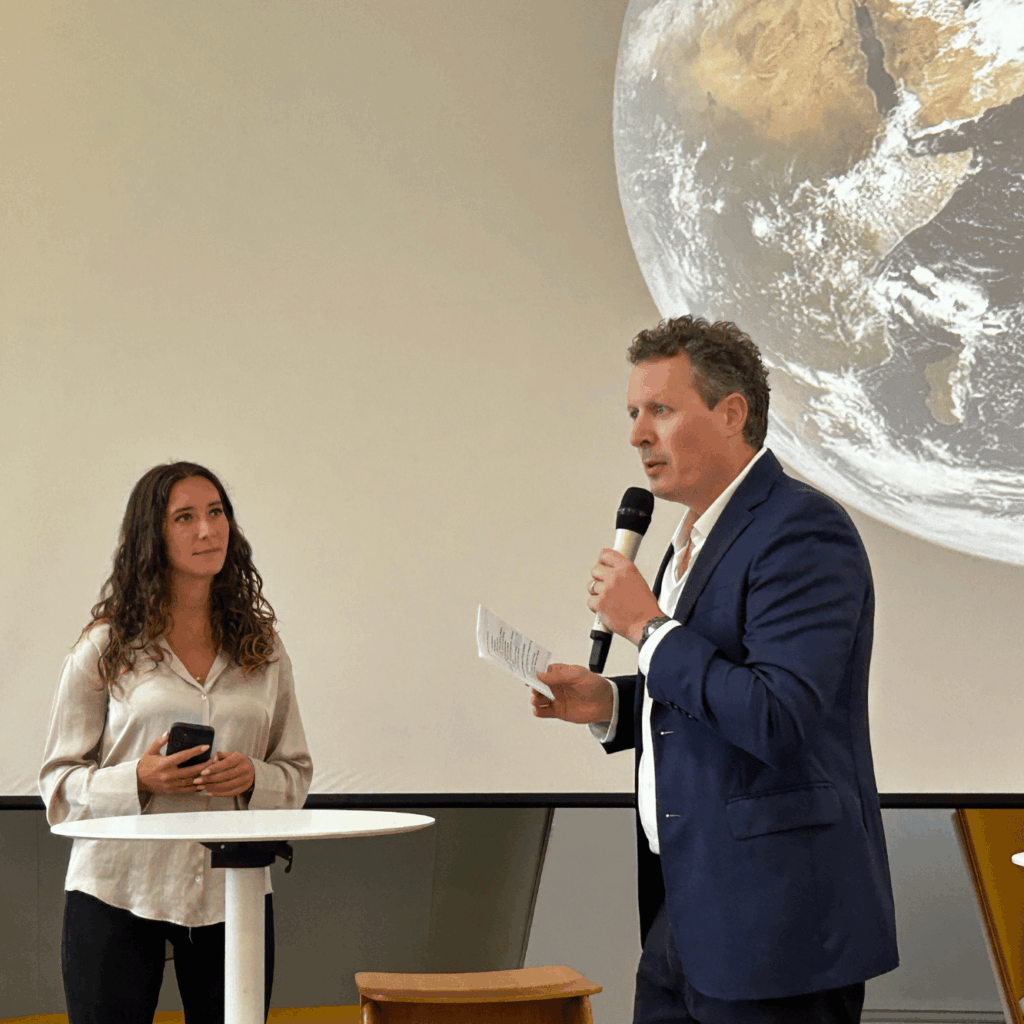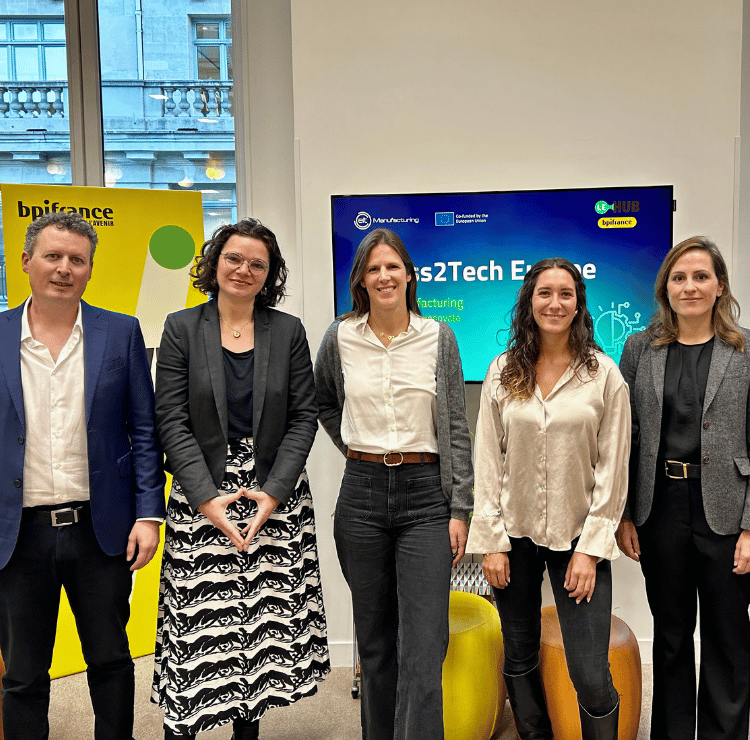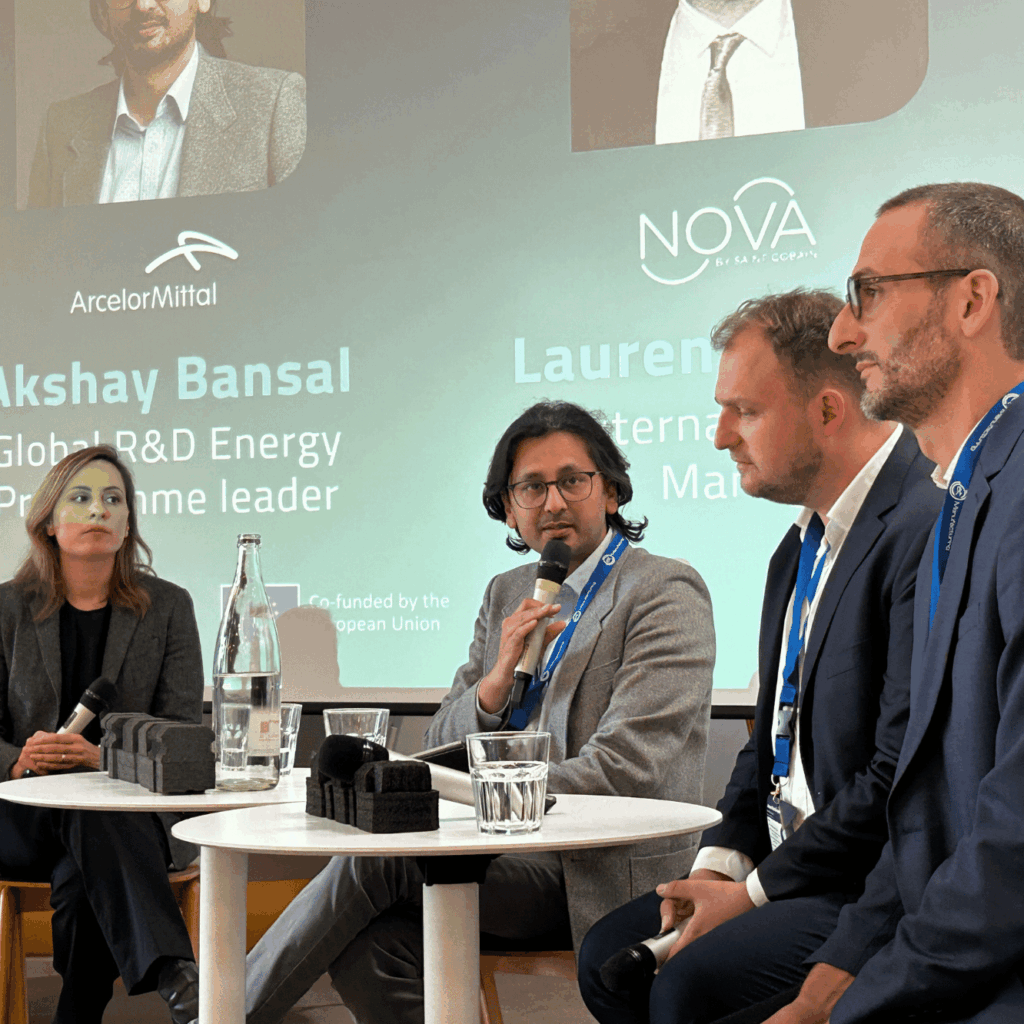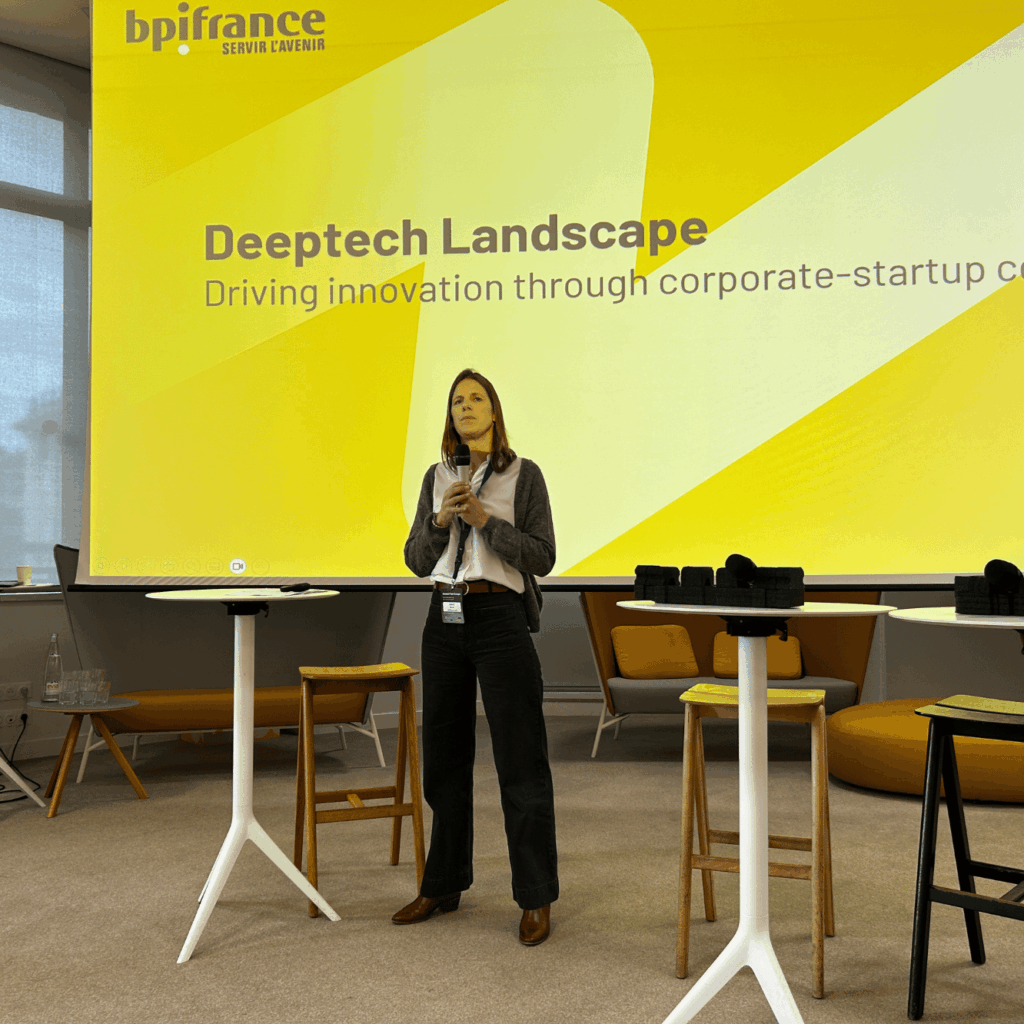When big industries go green: Lessons from Access2Tech Paris
Access2Tech Green Manufacturing kicked off at Bpifrance Le Hub, where more than 50 attendees were invited to imagine viewing Earth from 1.5 million kilometres away. This opening thought, shared by host Jérémie Dalibot, Business Development and Innovation Manager at EIT Manufacturing West, encouraged everyone to take a step back – to look beyond today’s uncertainty and rethink how we produce, consume and manage resources and waste. The shared goal: building a more sustainable industry.

Jérémie Dalibot, Business Development and Innovation Manager at EIT Manufacturing West, welcomes the audience to Access2Tech Green Manufacturing. He was co-hosting the event together with Eléonore De Galzain, Partnerships Manager at Bpifrance Le Hub.
All attendees agreed on one key takeaway: collaboration between startups and large corporations is essential to drive meaningful, lasting change. The Access2Tech event, organised together with Bpifrance Le Hub, is designed to make those connections happen. This edition brought together more than 20 startups from Portugal, Spain, France, Germany, Austria and Italy, who presented their solutions to French industrial players. In return, the corporates shared their needs and challenges – sparking open, practical discussions.

EIT Manufacturing and Bpifrance Le Hub – a strong collaboration in action (from left to right): Jérémie Dalibot, Caroline Viarouge, Emelie Bernet, Eléonore De Galzain and Gala Maturana.
How traditional industries become climate champions
To effectively decarbonise the planet, attention must be given to high-volume, high-impact industries like glass and steel, as they form the foundation of the economy. These were the opening statements with which Gala Maturana, Business Development and Innovation Senior Manager at EIT Manufacturing West opened the panel discussion titled “How Big Players Go Green”.
They are the foundation of our economy: our cars, trains, homes and even cities are made of these materials.
Gala Maturana, Business Development and Innovation Senior Manager at EIT Manufacturing West
As moderator, Maturana, together with panellists Akshay Bansal, Global R&D Energy Programme Leader and Creativity & Open Innovation Coordinator at ArcelorMittal, Laurent Ehrhard, Venture Capital Investor at NOVA, the financial arm of Saint-Gobain and Xavier Baillard, Director of Innovation to Market at EIT Manufacturing, explored one key question: How can industries that were born in the 19th century become climate champions in the 21st?

A panel discussion on “How big players go green” featured Gala Maturana as moderator and three panellists (from left to right): Akshay Bansal, Laurent Ehrhard and Xavier Baillard.
A red thread quickly emerged – the challenge of going green while keeping operations running. Laurent Ehrhard noted, “We want to prove that we can produce greener without sacrificing productivity.” Akshay Bansal explained the complexity of working with existing, decades-old facilities: “We work in brownfields, so there’s no ideal setup. Solutions must integrate into what’s already there.”
The relationship between productivity and “going green” or adopting environmentally sustainable practices is complex but increasingly seen as complementary rather than conflicting. The green transition involves sectoral shifts that may initially impact aggregate productivity metrics, as resources move away from more polluting sectors to those aligned with sustainability goals. But successful green growth aligns productivity with environmental sustainability and can open new market opportunities.
Laurent Ehrhard shared an inspiring example of Saint-Gobain’s progress with recycled glass. “Last year, we used one kilogram of recycled glass per day. Now we use one tonne.” This improvement required gradual changes in formulas and supply chains. “It takes time and transparency between the strategy and R&D teams,” he added.
Modelling tools to avoid failures before they happen
Akshay Bansal emphasised the need to speed up breakthrough projects: “It’s crucial to make sure first-of-its-kind ideas don’t turn out to be a one-shot.” He highlighted the role of digital and modelling tools in predicting potential failures before they happen. “The hardest part is turning an idea into implementation and unlocking value inside plants.”
Laurent Ehrhard closed with a call for stronger connections among neighbouring industrial players and greater local sovereignty, especially amid geopolitical tensions. Xavier Baillard added that staying competitive shouldn’t mean ignoring climate change. “We can’t just go back to business as usual”, he said. “Europe really needs to find ways to decarbonise.” He pointed out that supportive regulations and funding incentives make it possible to take risks and keep moving forward faster.
Europe’s next leap: industrial leadership through AI, data and collaborative innovation
Caroline Viarouge, CEO of EIT Manufacturing, highlighted the global technology race between Europe, China and the United States. Europe already leads in key areas such as industrial IoT, robotics and automation, advanced materials and sustainable manufacturing – and that the next big opportunity lies in AI and data – technologies that accelerate all others.
Being a technology leader doesn’t mean being a market leader. Europe has the foundations – and now the opportunity – to reinforce its global position by embracing AI and data-driven innovation.
Caroline Viarouge, CEO of EIT Manufacturing
Émilie Bernet, Head of Business Development and Corporate Relationship at Bpifrance Le Hub Jean-Baptiste Civit, Deeptech Project Manager – Strategy and Data also from Bpifrance, informed that almost 600 of the invested deep-tech startups overlap with the green-tech sector and shared recent trends: “In the past three to five years, the VC ecosystem has shifted from pure value creation to startups that are building and sharing innovative strategies.”

Emilie Bernet, Head of Business Development and Corporate Relationship at Bpifrance Le Hub, highlighted the importance of deeptech.
Connecting solutions through dialogue
Sharing innovative strategies was at the heart of the onsite event: startups showcased their solutions, while corporates took the stage to pitch their innovative needs and opportunities. The event also featured a series of networking sessions and matchmaking meetings, leaving attendees engaged in meaningful conversations.

